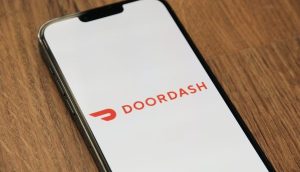
This week, Interac targeted Toronto’s financial sector with a new OOH board made from 330 real wallets. The ad is meant to encourage Canadians to add Interac debit cards to their phone’s digital wallet in an effort to avoid losing their physical billfolds and coin purses.
The activation is being supported by a national campaign, digital ads on social media and OOH spots in various locations, including urban centres, student campuses and transit locations, such as OC Transpo, TTC and GO Transit.
Media Experts is handling media planning and buying, with Zulu Alpha Kilo as the brand’s creative partner. Group SJR is behind content development, with earned media, survey research, sponsored content and influencers by Hill & Knowlton, and French adaptation for the Quebec market managed by The French Shop.
The “Lost Wallet Board” represents how many wallets Canadians lose per hour, says Matt Houghton, Interac’s digital and integrated marketing leader. Houghton tells Media in Canada that approximately 2.9 million wallets are lost each year, so Interac wanted to highlight digital wallets as a way to protect payments in an increasingly digital world.
The brand also wants to capitalize on the growing popularity of digital wallets across the country. A recent Interac survey, conducted by a Hill & Knowlton and Leger Opinion online panel, shows that seven in 10 Canadian Gen Z adults (69%) use digital wallets, and six in 10 (63%) of that demographic prefer to leave physical debit cards at home for short trips.
“With more and more Canadians practicing the same digital habits leaving home without a physical wallet each day, we want to ensure they’re still able to use and access Interac debit as a preferred way to pay,” Houghton says.
The activation, according to Houghton, is consistent with the existing brand positioning, which emphasizes how Interac’s products give Canadians control over their money, thereby building trust and allowing consumers to be more cautious about their spending.
“This generation’s desire to stay in control of their money and curb overspending is heightened by the arrival of the back-to-school season, which is traditionally linked with greater spending,” Houghton adds. The Interac survey showed that more than half (54%) of Gen Z see the need to develop new habits to stay in control of their finances, and 56% are setting this September as a deadline to introduce these new habits.






















